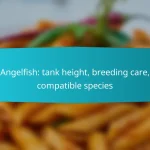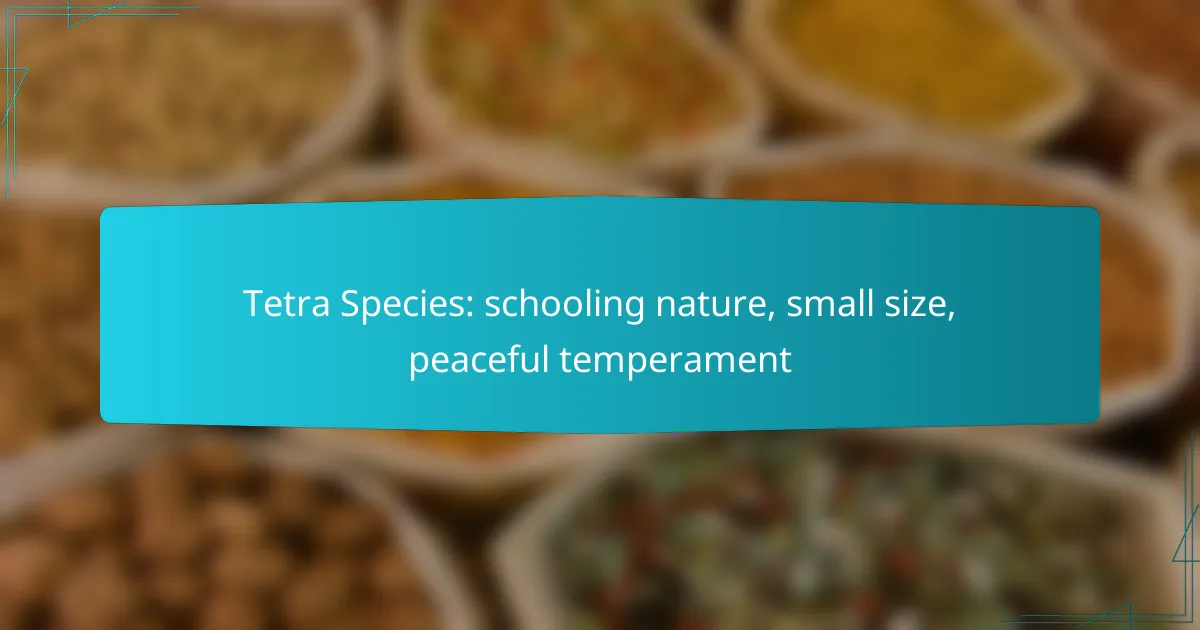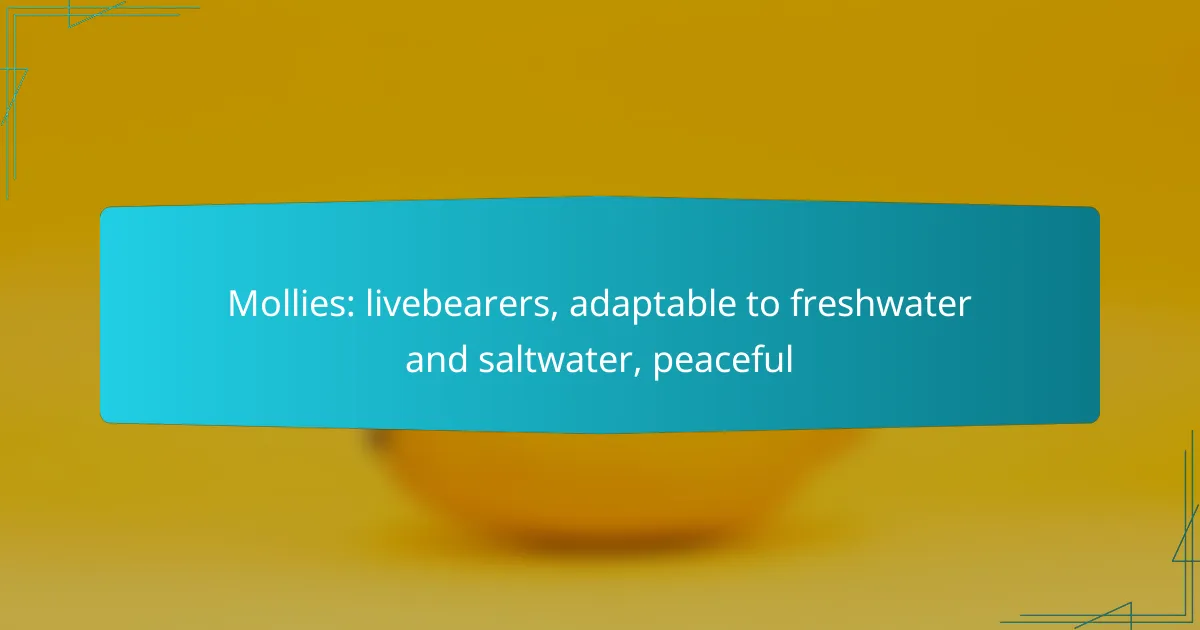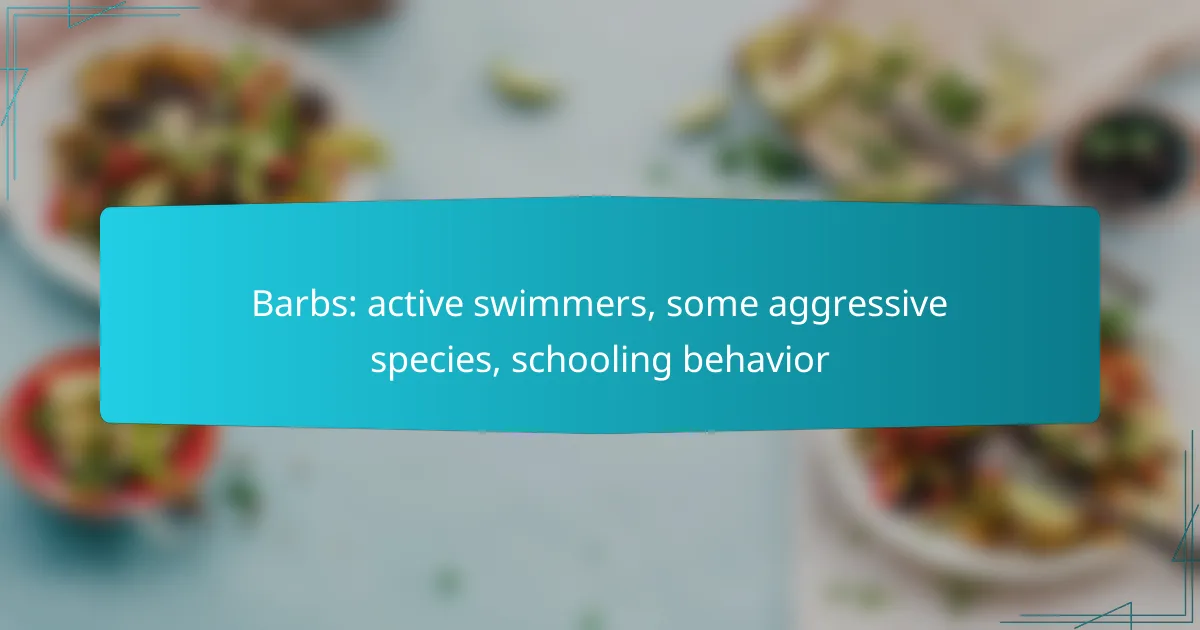Tetra species are small, peaceful fish that are perfect for beginners and thrive in schools. Their sociable nature makes them ideal for community tanks, where they can flourish in a well-planted environment with clean water. With proper care and a balanced diet, these vibrant fish can bring life to any aquarium.
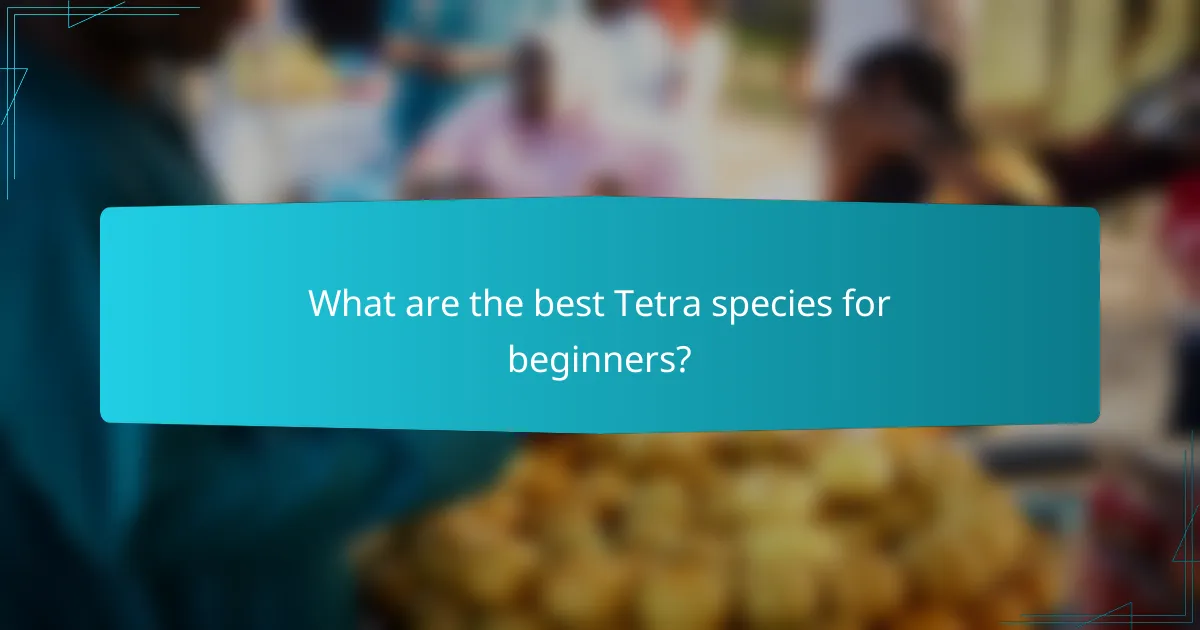
What are the best Tetra species for beginners?
The best Tetra species for beginners are those that are small, peaceful, and thrive in schools. These fish are easy to care for and adapt well to community tanks, making them ideal for novice aquarists.
Neon Tetra
The Neon Tetra is a popular choice for beginners due to its vibrant colors and small size, typically reaching about 1.5 inches in length. They are best kept in groups of at least six to display their natural schooling behavior.
These fish prefer slightly acidic to neutral water conditions and thrive in well-planted tanks. Regular water changes and a varied diet will help maintain their health and color vibrancy.
Cardinal Tetra
Similar to the Neon Tetra, the Cardinal Tetra is known for its striking blue and red coloration. They can grow up to 2 inches long and are also best kept in schools of six or more.
Cardinal Tetras are slightly more tolerant of varying water conditions, making them a good option for beginners. They enjoy a well-planted environment and should be fed a balanced diet of flakes and live foods.
Rummy Nose Tetra
The Rummy Nose Tetra is recognized for its distinctive red nose and black-and-white striped tail. They typically reach about 2 inches in size and are happiest in groups of at least eight.
These fish prefer stable water parameters and a well-maintained tank. A varied diet including high-quality flakes and occasional live food will keep them healthy and vibrant.
Ember Tetra
Ember Tetras are small, reaching only about 1 inch in length, and are characterized by their bright orange coloration. They thrive in schools of six or more and are very peaceful, making them suitable for community tanks.
These fish prefer slightly acidic water and enjoy a planted environment. They are not demanding eaters and will accept a variety of foods, including flakes and small pellets.
Black Neon Tetra
The Black Neon Tetra is a unique variant with a striking black and silver coloration. They grow to about 1.5 inches and should be kept in groups of at least six to encourage their natural schooling behavior.
These fish are adaptable to various water conditions but prefer slightly acidic to neutral pH levels. A balanced diet and a well-planted tank will help them thrive in a community setting.
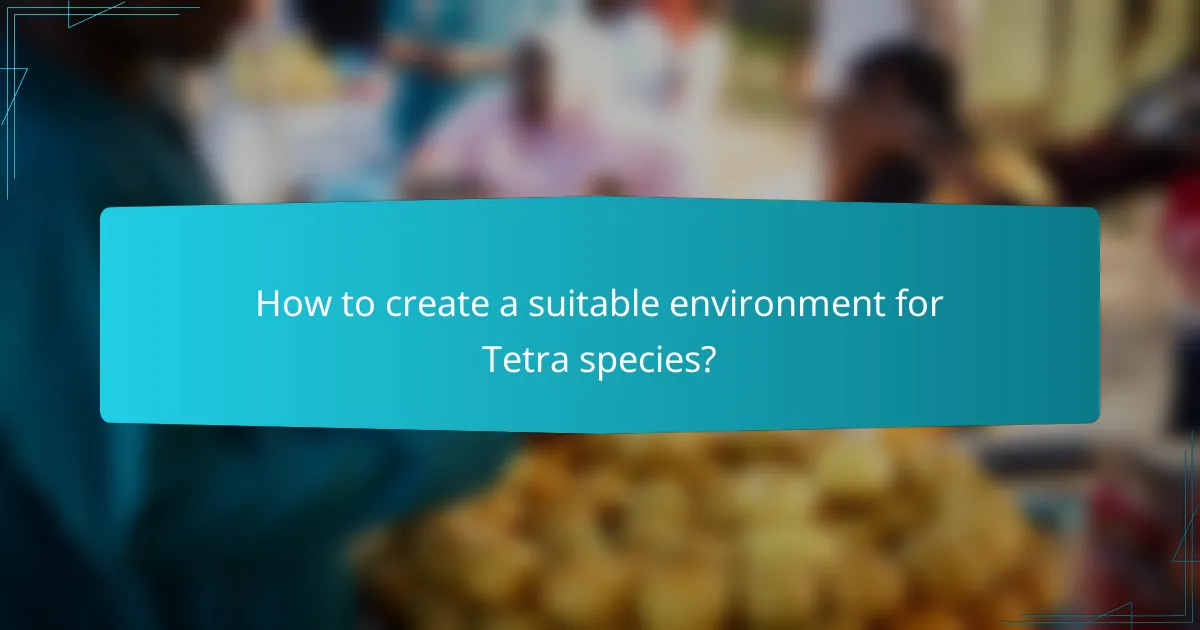
How to create a suitable environment for Tetra species?
To create a suitable environment for Tetra species, focus on providing ample space, clean water, and a well-planted tank. These small, peaceful fish thrive in groups and require specific conditions to flourish.
Tank size recommendations
A minimum tank size of 20 gallons is recommended for a small school of Tetra species, as they prefer to swim freely. Larger tanks can accommodate more fish and provide better water stability. For example, a 30-gallon tank can house a school of 10-12 Tetras comfortably.
Water parameters
Tetras thrive in soft, slightly acidic to neutral water, with a pH range of 6.0 to 7.5. The temperature should be maintained between 22°C and 28°C (72°F to 82°F). Regular water changes of about 25% every two weeks help maintain optimal conditions and reduce toxins.
Plant and decor suggestions
Incorporate live plants such as Java fern, Amazon sword, and floating plants to create a natural environment. Tetras enjoy hiding spots, so include decorations like driftwood and rocks. Ensure there are open swimming areas while maintaining dense vegetation for security and comfort.

What are the feeding requirements for Tetra species?
Tetra species require a balanced diet that includes a variety of foods to meet their nutritional needs. These small, peaceful fish thrive on high-quality flakes, pellets, and occasional live or frozen foods to support their health and vibrant colors.
Types of food
Tetras benefit from a mix of foods to ensure they receive essential nutrients. High-quality flake food designed for tropical fish serves as a staple, while small pellets can provide additional protein. Supplementing their diet with live or frozen foods like brine shrimp, daphnia, or bloodworms enhances their diet and encourages natural foraging behavior.
Feeding frequency
Feed Tetras small amounts two to three times a day, ensuring they consume all the food within a few minutes. This frequent feeding schedule mimics their natural feeding habits and helps maintain their energy levels. Overfeeding can lead to water quality issues, so it’s crucial to monitor their intake closely.
Special dietary needs
While Tetras are generally not picky eaters, some species may have specific dietary preferences. For instance, certain Tetras may require more plant-based foods, while others thrive on higher protein diets. It’s important to research the specific species you have to tailor their diet accordingly and ensure they receive the right balance of nutrients.
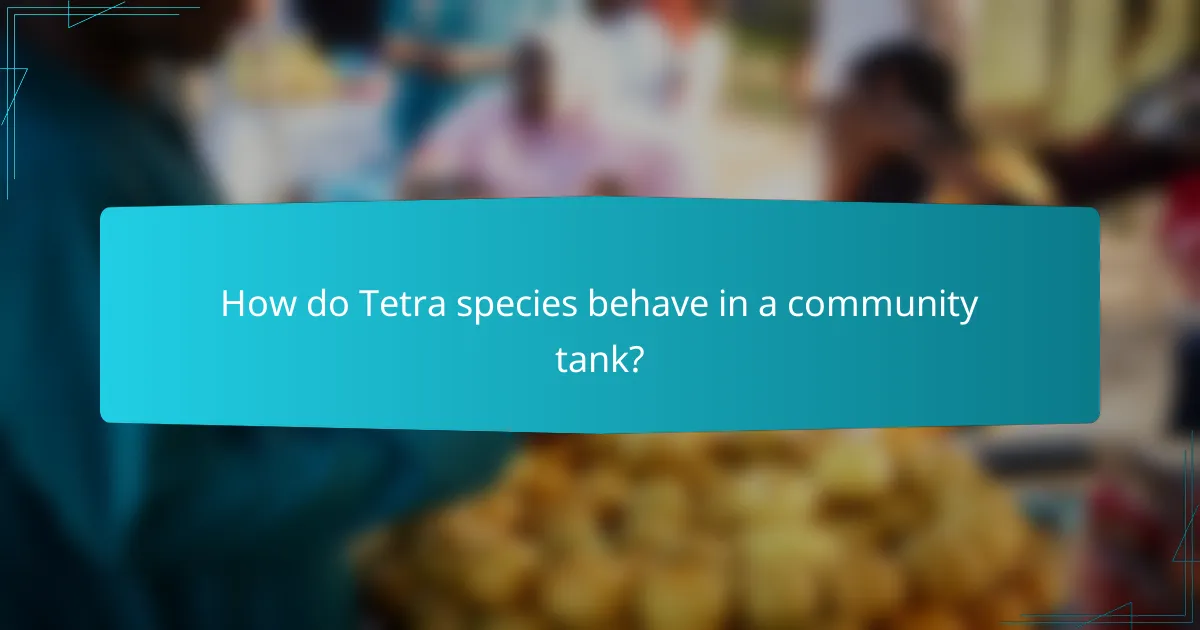
How do Tetra species behave in a community tank?
Tetra species are known for their peaceful nature and social behavior, making them ideal for community tanks. They thrive in groups, exhibiting schooling tendencies that enhance their well-being and reduce stress.
Schooling behavior
Tetras are naturally schooling fish, meaning they feel safest and most comfortable when kept in groups of at least five to six individuals. This schooling behavior not only promotes their mental health but also encourages natural behaviors such as foraging and swimming. A larger group can enhance their confidence and reduce the likelihood of stress-related issues.
In a community tank, it’s beneficial to provide ample swimming space and hiding spots to accommodate their active nature. This setup allows tetras to exhibit their social interactions while minimizing territorial disputes.
Compatibility with other fish
Tetras are generally peaceful and can coexist with a variety of other non-aggressive fish species. Ideal tank mates include small community fish such as guppies, rasboras, and other tetras. It’s important to avoid larger or aggressive species that may intimidate or harm them.
When selecting tank mates, consider the size and temperament of the fish. Tetras thrive in a harmonious environment, so ensuring compatibility is key to maintaining a healthy community tank.
Signs of stress
Common signs of stress in tetras include erratic swimming, hiding excessively, or displaying faded colors. Stress can be caused by poor water quality, overcrowding, or aggressive tank mates. Monitoring these behaviors is crucial for maintaining their health.
If you notice signs of stress, assess the tank conditions, including water parameters and the social dynamics among the fish. Making adjustments, such as improving water quality or rearranging tank mates, can help alleviate stress and promote a more stable environment for your tetras.
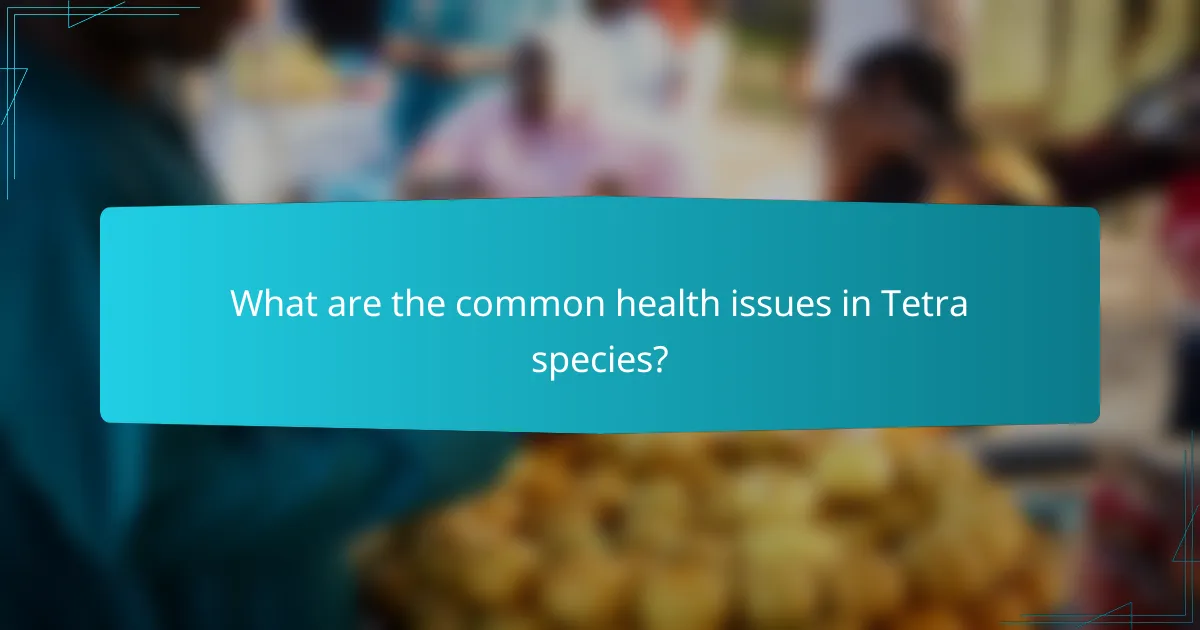
What are the common health issues in Tetra species?
Tetra species are generally hardy fish, but they can experience several common health issues that may affect their well-being. Recognizing these problems early can help ensure a healthy aquarium environment and improve the longevity of your fish.
Ich (White Spot Disease)
Ich, or White Spot Disease, is a prevalent parasitic infection in Tetra species, characterized by small white spots on the fish’s body and fins. This disease often arises from stress or poor water quality, making it crucial to maintain optimal tank conditions.
To treat Ich, consider raising the water temperature gradually and adding a suitable medication designed for this parasite. It’s essential to quarantine affected fish to prevent the spread of the disease to healthy tank mates.
Fin rot
Fin rot is a bacterial infection that causes the fins of Tetra species to appear frayed or disintegrated. This condition is often a result of poor water quality or physical injuries, making regular tank maintenance vital.
To prevent fin rot, ensure that the aquarium is clean and well-filtered. If fin rot occurs, treating the water with antibiotics and improving tank conditions can help the fish recover. Regular water changes and monitoring for injuries can also mitigate this issue.
Swim bladder disorder
Swim bladder disorder affects the buoyancy of Tetra species, causing them to float uncontrollably or sink to the bottom. This condition can be caused by overfeeding, constipation, or infections, making it important to monitor feeding habits closely.
To manage swim bladder disorder, consider fasting the fish for a couple of days and then offering high-fiber foods, such as peas, to help clear any blockages. If symptoms persist, consult a veterinarian for further advice and treatment options.





